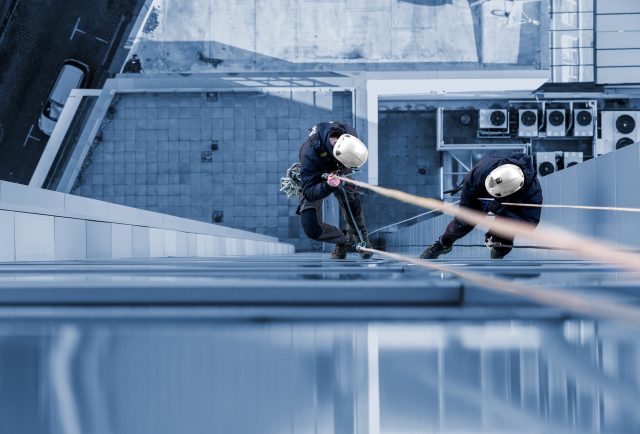As discussed in our recent Quick Guide to Working at Height, falls from height remain the main cause of fatal workplace accidents in the UK.
The fall protection standard, BS 7883, was initially introduced in 1997 to provide stringent guidelines for the design, installation and maintenance of anchor devices.
Importantly, this standard was revised in 2005 and again in 2019, so if you haven’t reviewed your systems recently, there’s a chance you may no longer be compliant and will need to be recertified.
In this blog, we review the changes to the legislation and explain what to do to get your systems up to standard.
What are the changes in BS 7883:2019?
First of all, it should be noted that this standard only applies to anchor systems that are being used for direct attachment of personal fall protection systems for use in the workplace.
The 2019 update acknowledges the advancements that have been made within fall protection technology – while the original standard applied when anchor devices were mainly eyebolts, BS 7883:2019 includes guidance for five separate types of anchor systems:
Type A: Permanently fixed anchor systems, incorporating one or more structural anchors, such as eyebolts.
Type B: Removable and transportable anchors that do not incorporate a structural anchor, and are not permanently fixed to a structure.
Type C: Structurally anchored anchorage systems featuring a flexible anchor line such as a wire rope, fibre rope or webbing.
Type D: Structurally anchored anchor systems incorporating a rigid rail or tube.
Type E: Anchor devices relying solely on mass and friction between themselves and load-bearing services.
Revisions to testing requirements under BS 7883:2019
The 2019 update extends inspection requirements to include inspections prior to use, as well as ‘periodic’, ‘interim’ and ‘supplementary’ checks.
Where the earlier legislation left compliance somewhat open to interpretation, the revised standard introduces four, clear category results:
Pass: the system satisfies all relevant recommendations. Allows existing equipment to remain in use.
Conditional pass: the system satisfies the recommendations and doesn’t present any immediate concern, however it does note meet all requirements of BS 7883:2019. An inspection report should be presented to the duty holder with recommendations on remedial work to improve the anchor device and a completion timescale.
Conditional fail: the system presents an immediate safety concern and should be taken out of service and labelled as such or decommissioned to prevent use. In these cases the safety concern can be rectified to meet the requirements of BS 7883:2019, with remedial works and a re-inspection required before returning to service.
Fail: the system represents an immediate safety concern and should be taken out of service and labelled ‘Do Not Use’ to avoid uncertainty. Where possible, it should be fully decommissioned, with permission to remove the system or device sought from the duty holder.
Additional changes under BS 7883: 2019
The revised legislation includes a number of additional compliance requirements.
The first, is the introduction of the role of ‘system designer’ who takes overall responsibility for the design of the personal fall protection system including certification and handover documents.
The design should be carried out in consultation with the duty holder and other interested parties and must consider the tasks to be carried out, the number and competency of users, the type and location of the workplace and the ongoing requirement for inspection, testing, repair and maintenance.
Guidance is provided on technical factors, including identification of the correct fall protection application, structural materials and limitations, and structural load calculation.
Importantly, installers who decide which personal fall protection should be used and where to install it, become the system designer and must take on the responsibility of that role.
BS 7883:2019 also emphasises the importance of detailed fall protection documentation, including a ‘System Technical File’ which must be produced by the system designer and passed to the duty holder for the life of the system.
The file should include records of the system design and layout (including the system specification and relevant calculations), structural fixing details, information on hidden elements, and inspection and test requirements, including installation photographs.
During installation further documentation should be provided, including an operations and maintenance manual.
Ensure your fall protection system is compliant
Regular inspection and recertification by a competent third party is a legal responsibility.
If you haven’t had your anchor devices or fall arrest systems inspected since the BS 7883:2019 update was introduced, you may be open to legal problems should an incident occur.
NSS Testing provides comprehensive installation and testing of fall arrest systems and our systems are designed to the fall arrest standard as specified by the Health & Safety Executive.
If you need to know whether your system complies with BS 7883:2019 get in touch to set up an inspection.
For more on the full regulations for working at height, get your copy of our comprehensive guide.
